Argentina mourns death of ex-President Kirchner
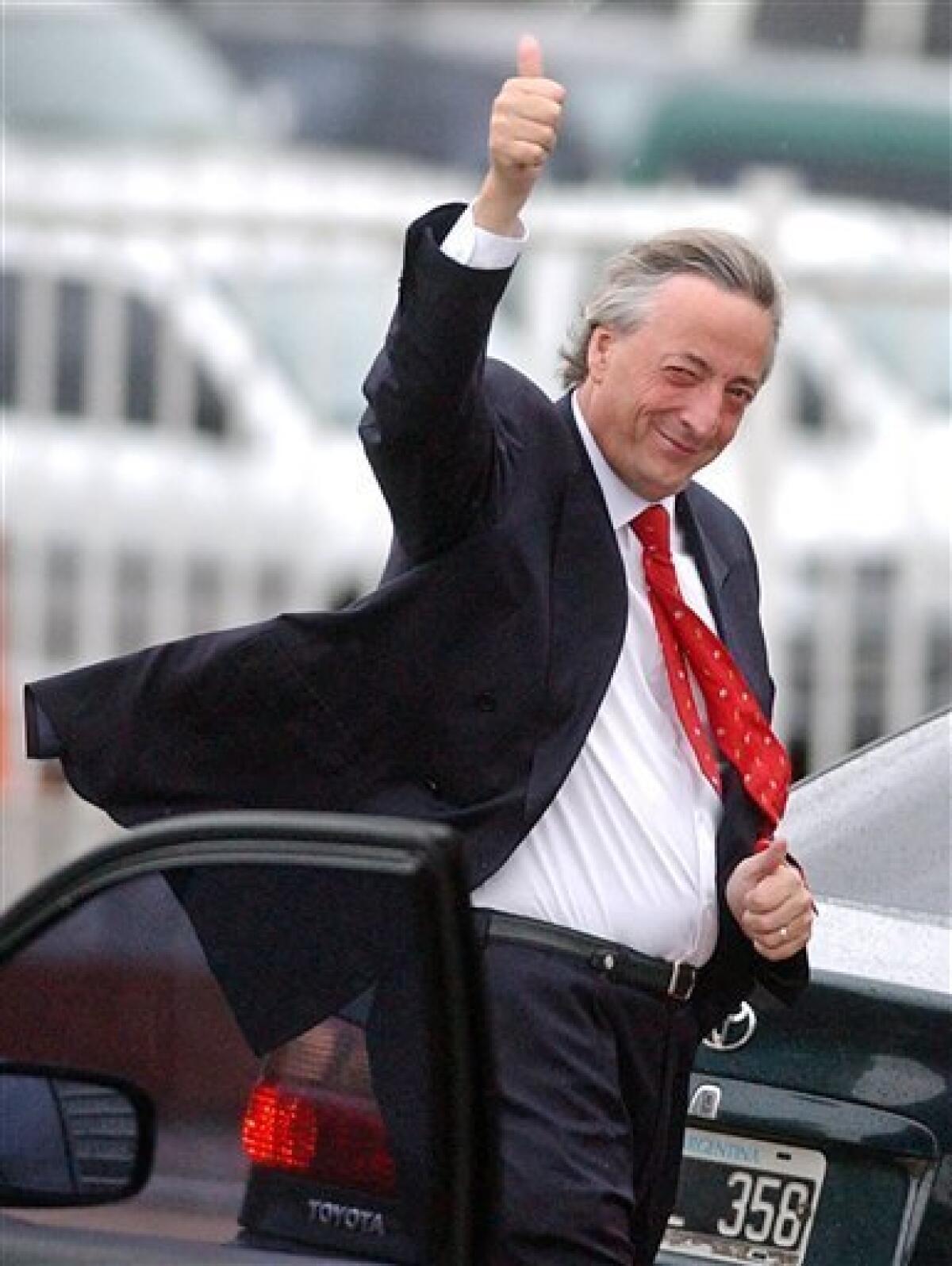

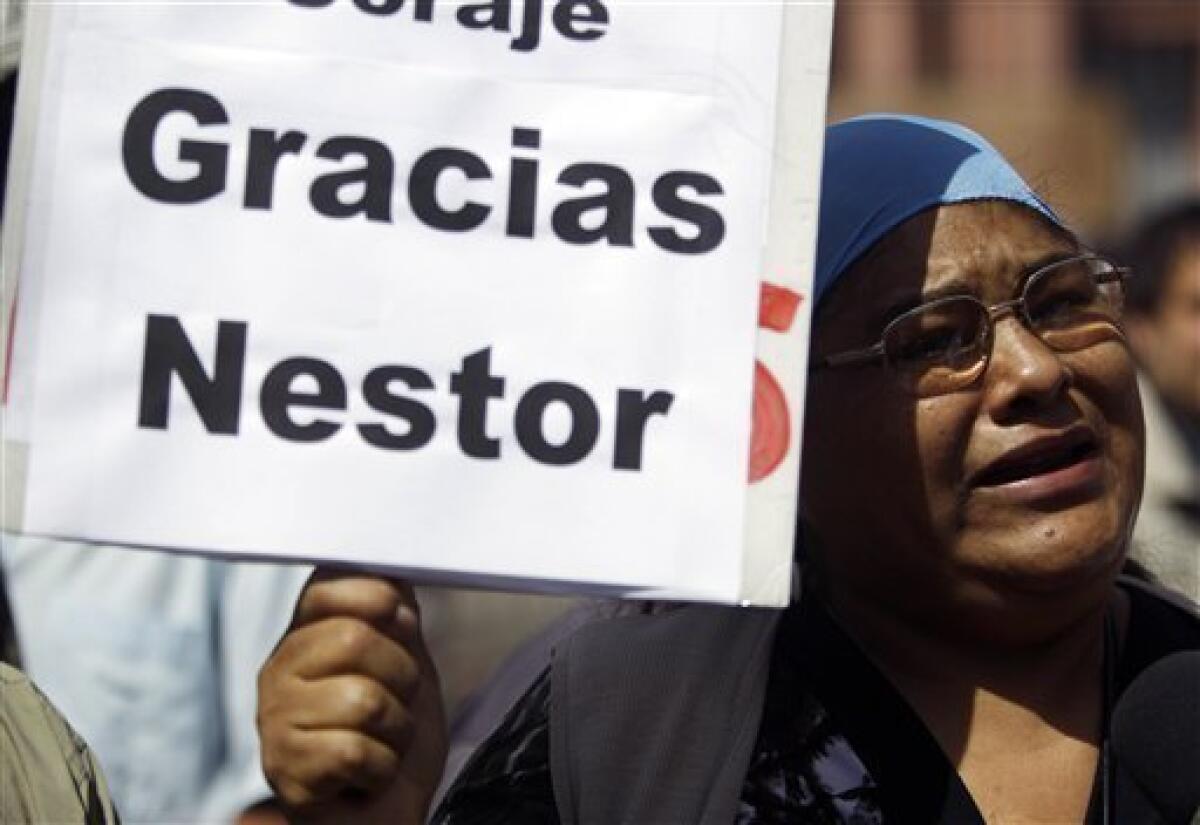
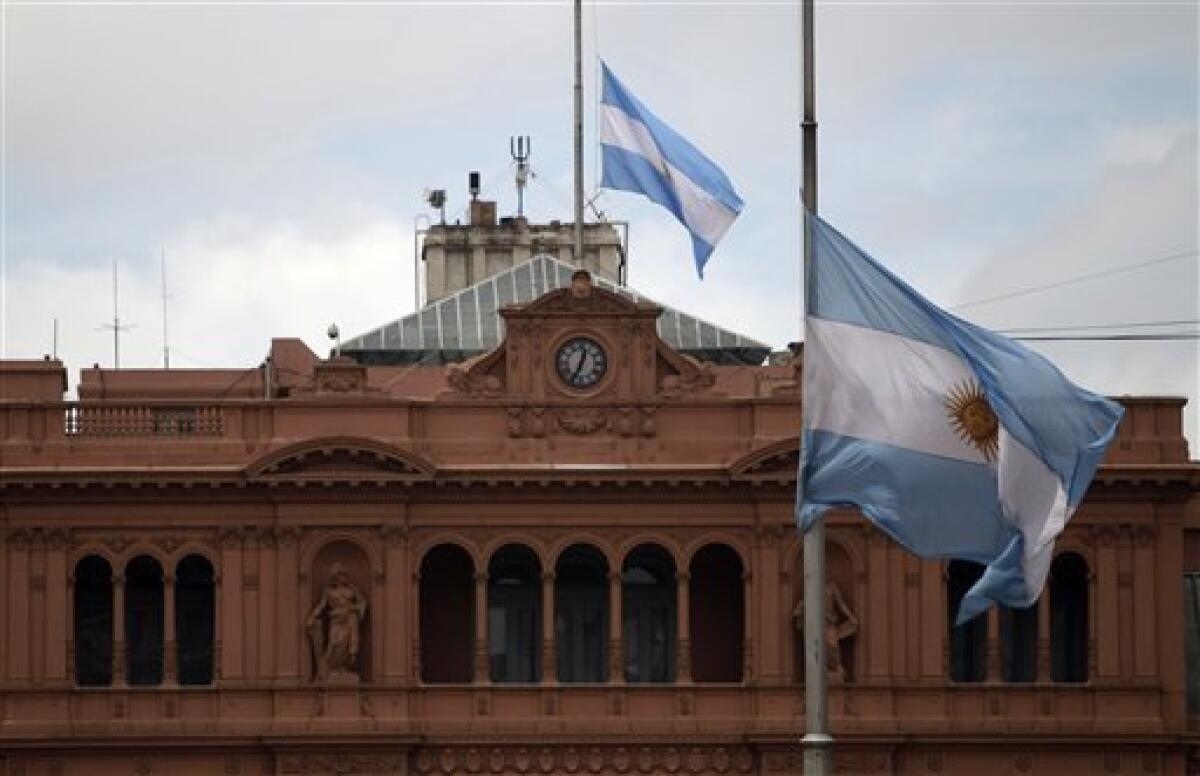



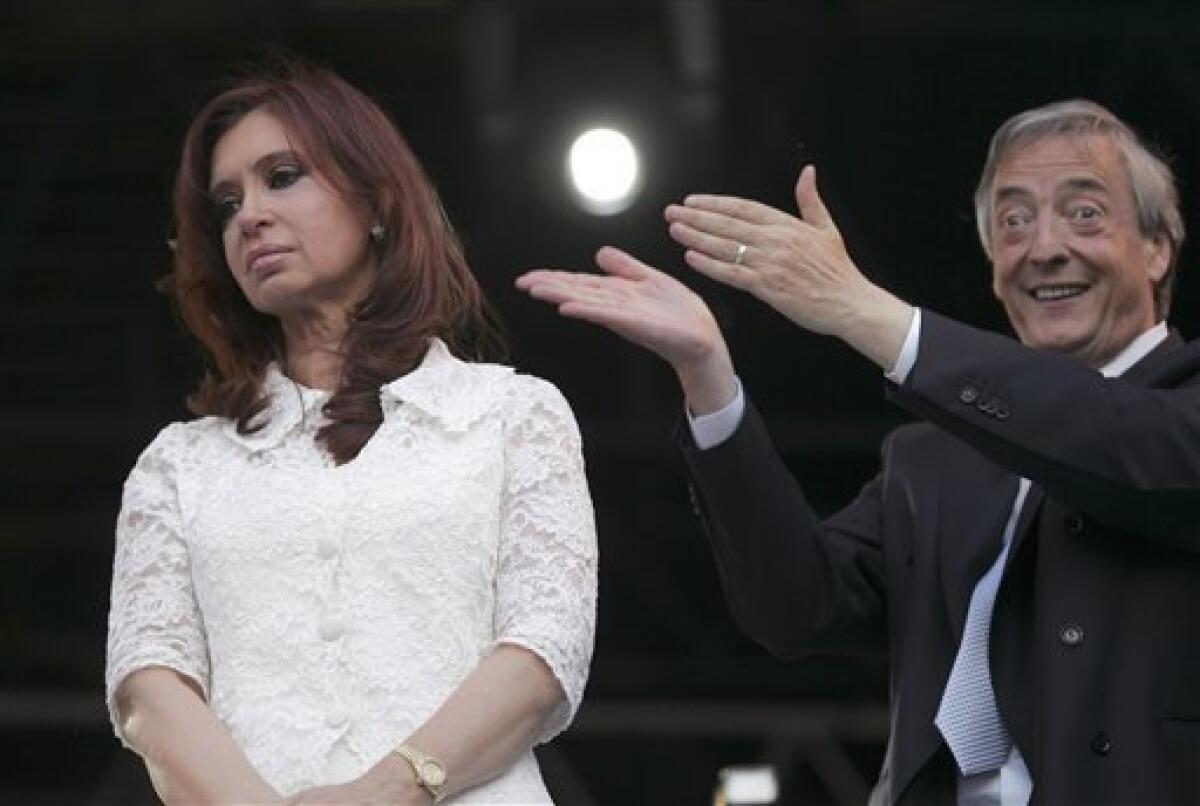

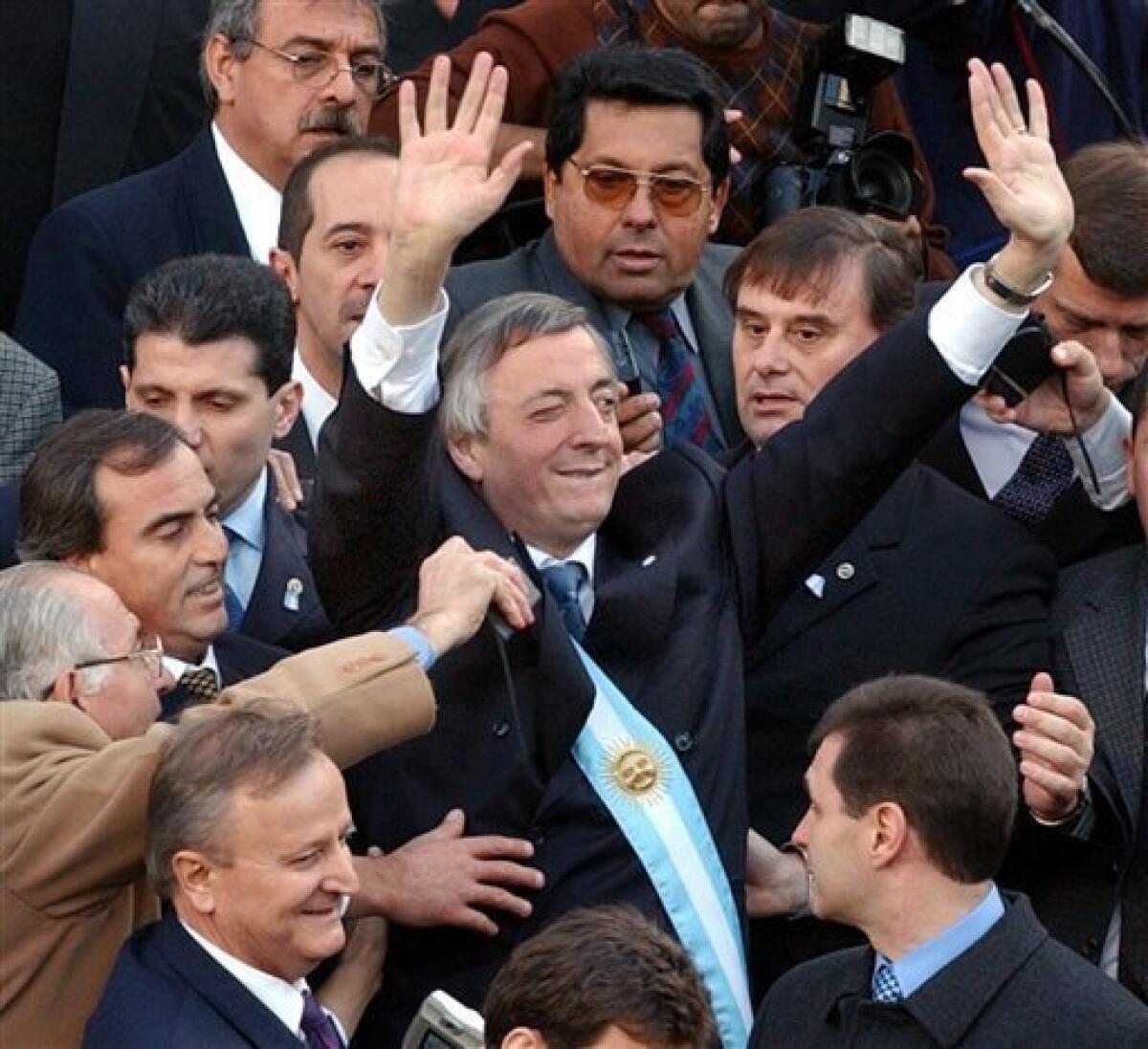

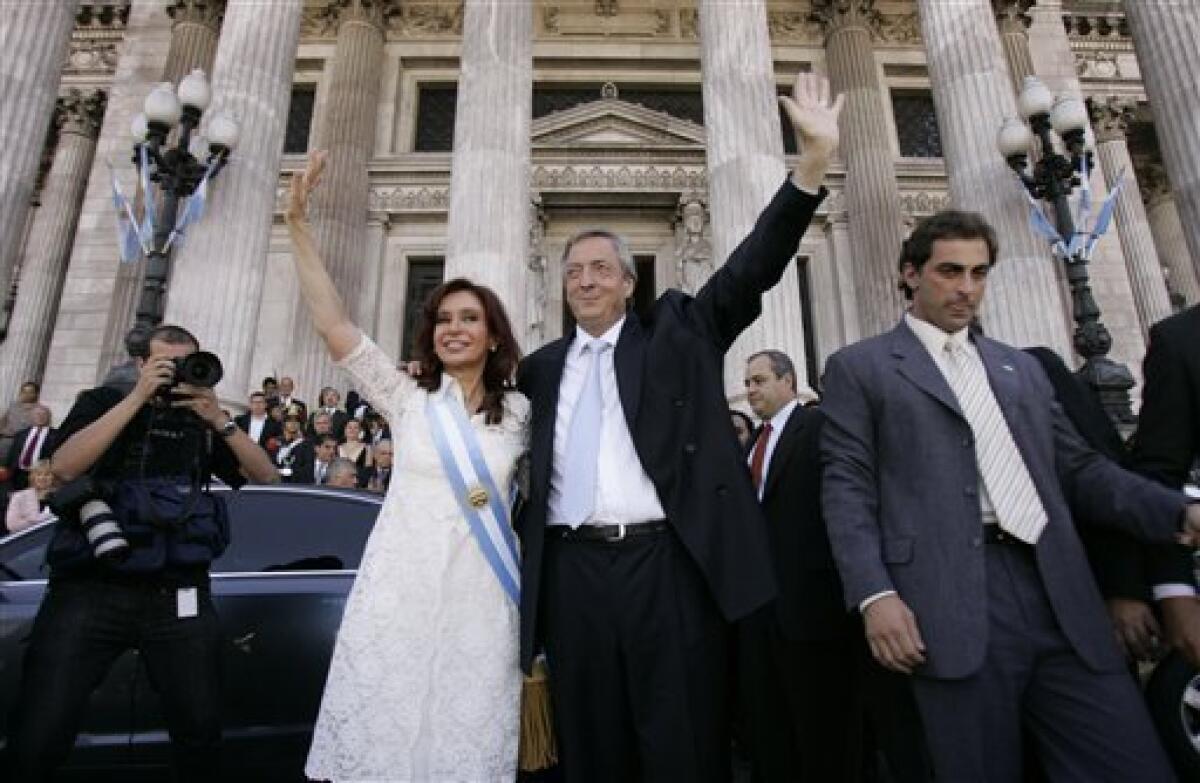


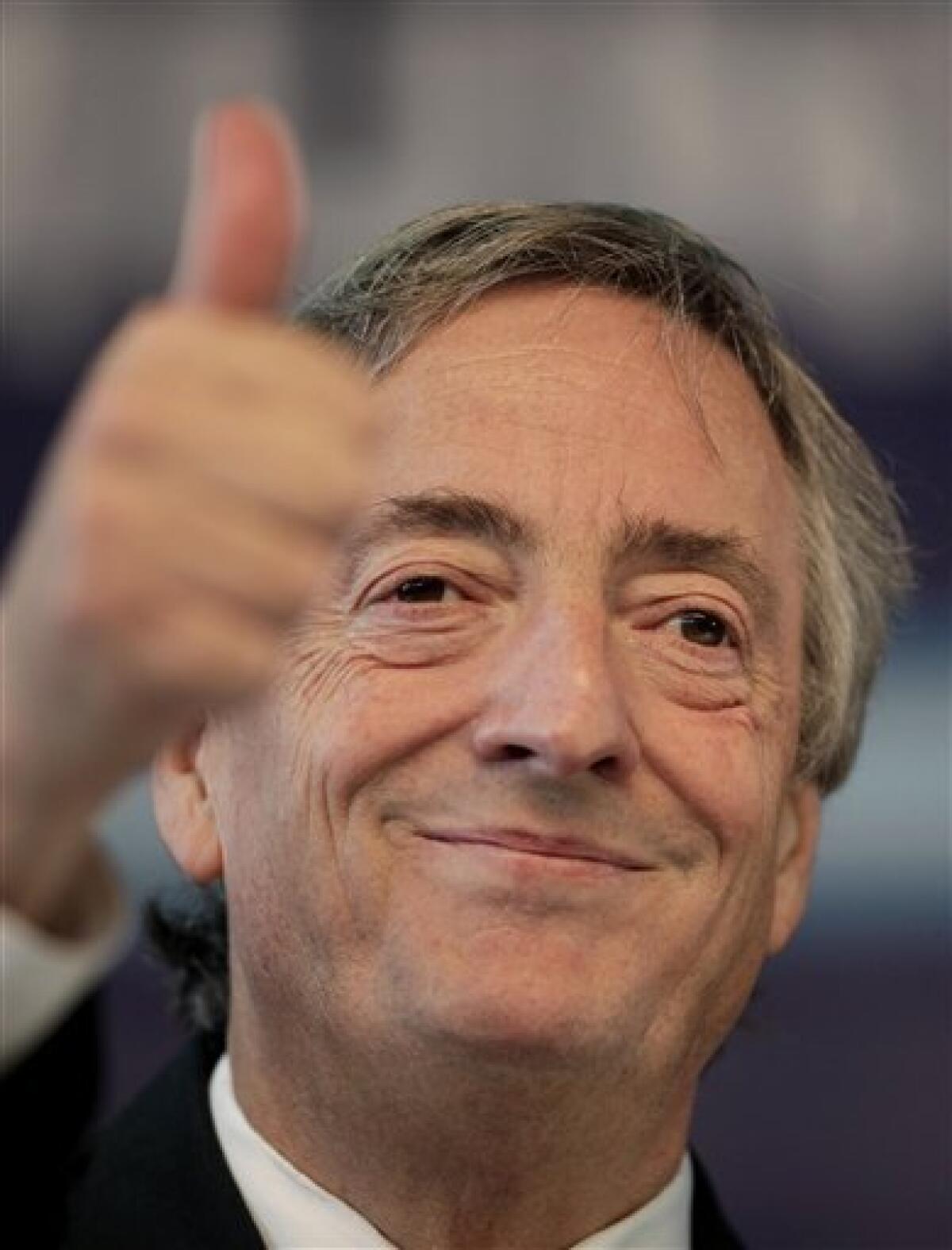
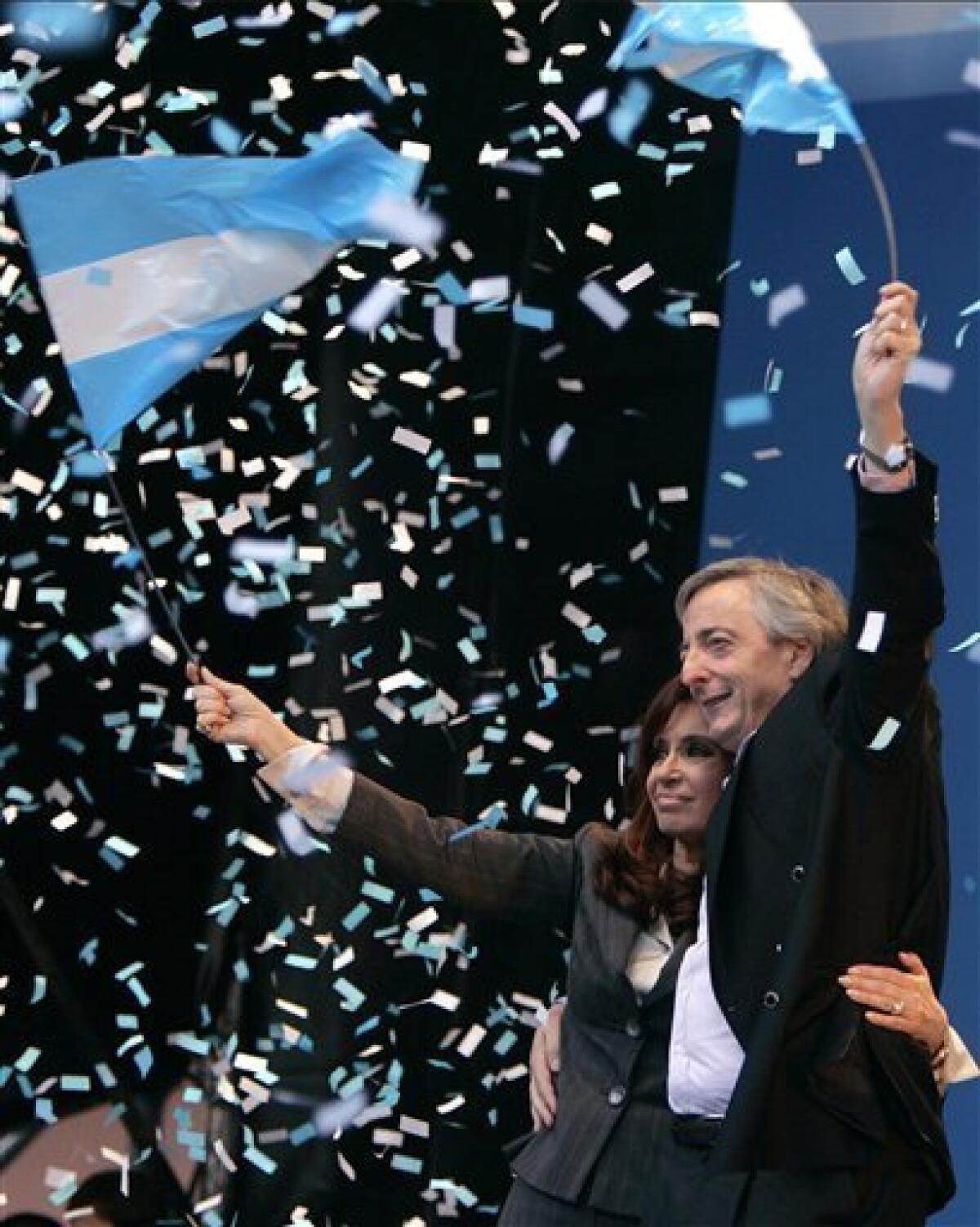
Nestor Kirchner, the leftist former president credited with guiding Argentina out of a deep economic crisis and reinvigorating efforts to prosecute human rights abuses committed during its dictatorship, died of a heart attack with his wife, President Cristina Fernandez, by his side.
The sudden death at age 60 of the powerful ex-president leaves a gaping hole in Argentine politics and abruptly ended a plan the couple had to keep succeeding each other and holding onto power for many years.
With next year’s elections looming, Fernandez will have to run for re-election without her closest adviser, the charismatic party leader who kept a tight lid on the country’s unruly political scene.
Latin American leaders arrived in the capital Thursday for a state vigil, and messages of condolences came in from around the world, including from U.S. President Barack Obama.
Argentines turned out by the thousands in Kirchner’s honor, filling the Plaza de Mayo outside the presidential palace Wednesday night.
“He’s someone who for the first time in our democracy, turned his politics toward the workers and the people. That’s why so many are here. The plaza shows that the people will support and deepen his model,” said Juan Pablo Mazzieri, 39. Fernandez, he added, “has the capacity to go it alone with all the people’s support.”
Kirchner had a history of heart trouble, undergoing emergency surgery on his carotid artery in February and an angioplasty in September, but refused to slow down, campaigning daily to lay the political groundwork for another run at the presidency by him or his wife.
He suffered another heart attack early Wednesday and was pronounced dead at 9:15 a.m., a presidential spokesman said.
While Fernandez is a powerful figure in her own right, Kirchner was seen as the heir to Argentine Gen. Juan Domingo Peron, the legendary strongman whose advocacy for workers brought generations into the middle class. Also like Peron, he tolerated few challengers, keeping in check the nation’s labor unions, activist groups, governors and mayors - political players who move thousands of voters and whose allegiance is vital to maintaining public order.
One of Kirchner’s latest campaign promises was to support a labor movement effort to require all large businesses to open their books to the unions and turn 10 percent of their profits over to the workers.
“After Peron and Eva Peron, nobody has done so much for the workers as Nestor Kirchner,” said Hugo Moyano, Argentina’s most powerful union leader, who now doubles as a Peronist party leader in Buenos Aires province.
Kirchner was governor of a thinly populated southern state when he was pulled from relative obscurity to become a presidential candidate in 2003, a time when Argentina was struggling to emerge from a deep economic crisis. He captured just 22 percent of a first-round vote despite the outgoing president’s support, and took office after his rival then dropped out.
Within just a few years, he had reestablished Argentina’s all-powerful presidency and become a major figure in Latin American politics, abandoning the “Washington consensus” of tight fiscal policies and free trade, isolating the country from foreign debt markets and imposing stringent controls on the flow of money and goods in and out of the country.
Argentina’s economy grew by more than 8 percent a year during his presidency, enabling him to cancel most of the country’s world-record debt default and pay off $9 billion in loans from the International Monetary Fund.
Then, at the height of his popularity in 2007, he stepped aside, enabling his wife to succeed him and setting the stage for what many hoped or feared would be a leftist dynasty in which husband and wife would take turns as president on into the future, sidestepping constitutional limits on re-election.
Kirchner and his wife worked together to increase their hold on Argentine politics. Thanks to their skills, Fernandez has been able to rule by decree for much of her presidency, despite losing majorities in Congress in midterm elections.
Without her husband, Fernandez is likely to face new threats from the left and right.
But Moyano, the nation’s most powerful union leader, quickly fell into step, ordering an emergency meeting of the General Labor Confederation, or CGT, where he said union leaders would “express our total support for the tenure of Cristina Kirchner.”
Credit markets were betting that his death will make Argentina more trustworthy. The cost of buying insurance on Argentine debt dropped 0.5 percent Wednesday afternoon, according to CMA Datavision, and shares of Argentine-based companies trading in New York surged despite a broad retreat of U.S. stocks.
“The Kirchner family has been relatively tough for investors,” explained Paul Herber, portfolio manager of the Forward Frontier Market Strat Fund, who said investors hope someone with more favorable policies may be elected next year.
Argentine analysts say that’s a poor bet - that Fernandez’s ability to govern through the Oct. 23 elections is not in doubt, and that at this point, no other candidate has emerged in the country’s fractured politics who might beat her.
“I don’t see any problems with her governability, let alone an institutional crisis,” political analyst Ricardo Rouvier told The Associated Press. “This is an opportunity for her - to turn herself into a true political chief.”
Kirchner also served as a congressman, leader of the leftist wing of the Peronist party and secretary general of the South American alliance known as Unasur, a role that made him an ideal figure to mediate a recent dispute between Venezuela and Colombia. Both countries’ leaders mourned his loss.
Many fellow leaders praised Kirchner’s advocacy of human rights. He reinvigorated efforts to prosecute crimes against humanity committed during Argentina’s 1976-1983 dictatorship. Congress and then the Supreme Court, whose independence he promoted, annulled the previous decades’ amnesty laws. About 20 trials involving hundreds of “Dirty War” figures are now under way.
“Our country needed this man so much. He was indispensable,” the leader of the Grandmothers of the Plaza de Mayo, Estela de Carlotto, told Radio Continental.
Born in the Patagonian province of Santa Cruz, Kirchner was active in the Young Peronists party as a student in La Plata, where he graduated in 1976. With the military firmly ruling the country, he and Fernandez worked as private attorneys in the provincial capital, raising two children - Maximo and Florencia. After democracy returned in 1983, Kirchner entered public service, first as the provincial pensions chief, and then as mayor of Rio Gallegos.
In 1991, he became Santa Cruz’s governor and Fernandez was elected to the provincial legislature, pushing through indefinite re-election and filling the provincial courts with sympathetic judges. It was the start of a hegemoniacal style of governing, leaving no room for consensus-building, that remains one of the most controversial aspects of his leadership.
In 1995 he was re-elected as governor by an overwhelming margin. But it was his management of the province’s bank accounts that enabled him to jump to politics at the national level. When Argentina was forced to devalue its currency in 2001, Kirchner had already moved into Swiss bank accounts millions of dollars from the privatization of the national oil company, avoiding a bank crackdown that robbed most Argentines of more than two-thirds of their wealth overnight.
The total amount of this money - and whether all of it was properly returned to Argentina - has been a subject of debate ever since.
Gustavo Baez, a medical student, said he came to the plaza Wednesday to show respect even though he didn’t agree with many of Kirchner’s decisions. “Kirchner appeared during a very difficult situation for Argentina, and was a good pilot in the storm.”
---
Associated Press writers Michael Warren, Vicente Panetta, Debora Rey, and Steve Wade in Buenos Aires and Vivian Sequera in Bogota, Colombia, contributed to this report.